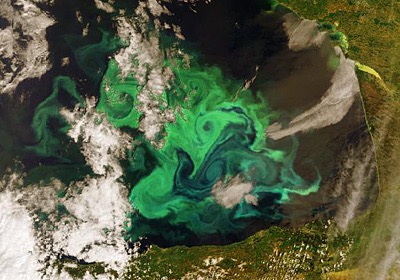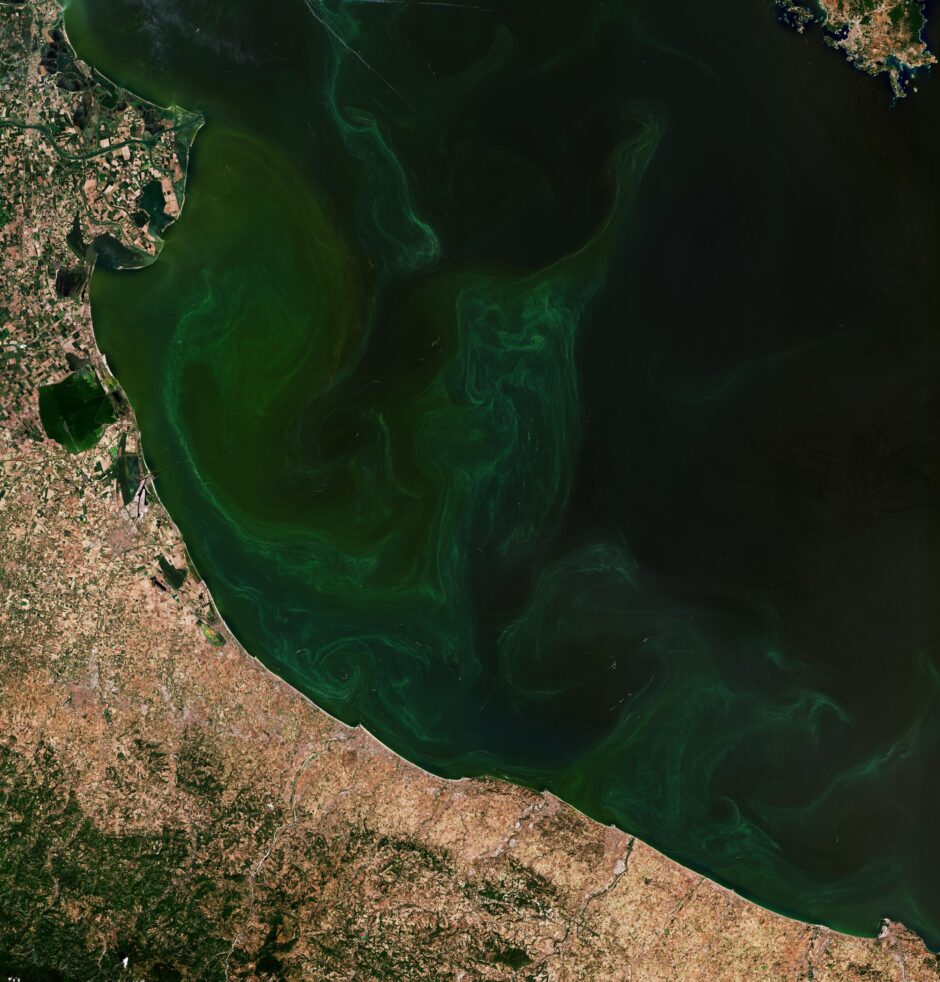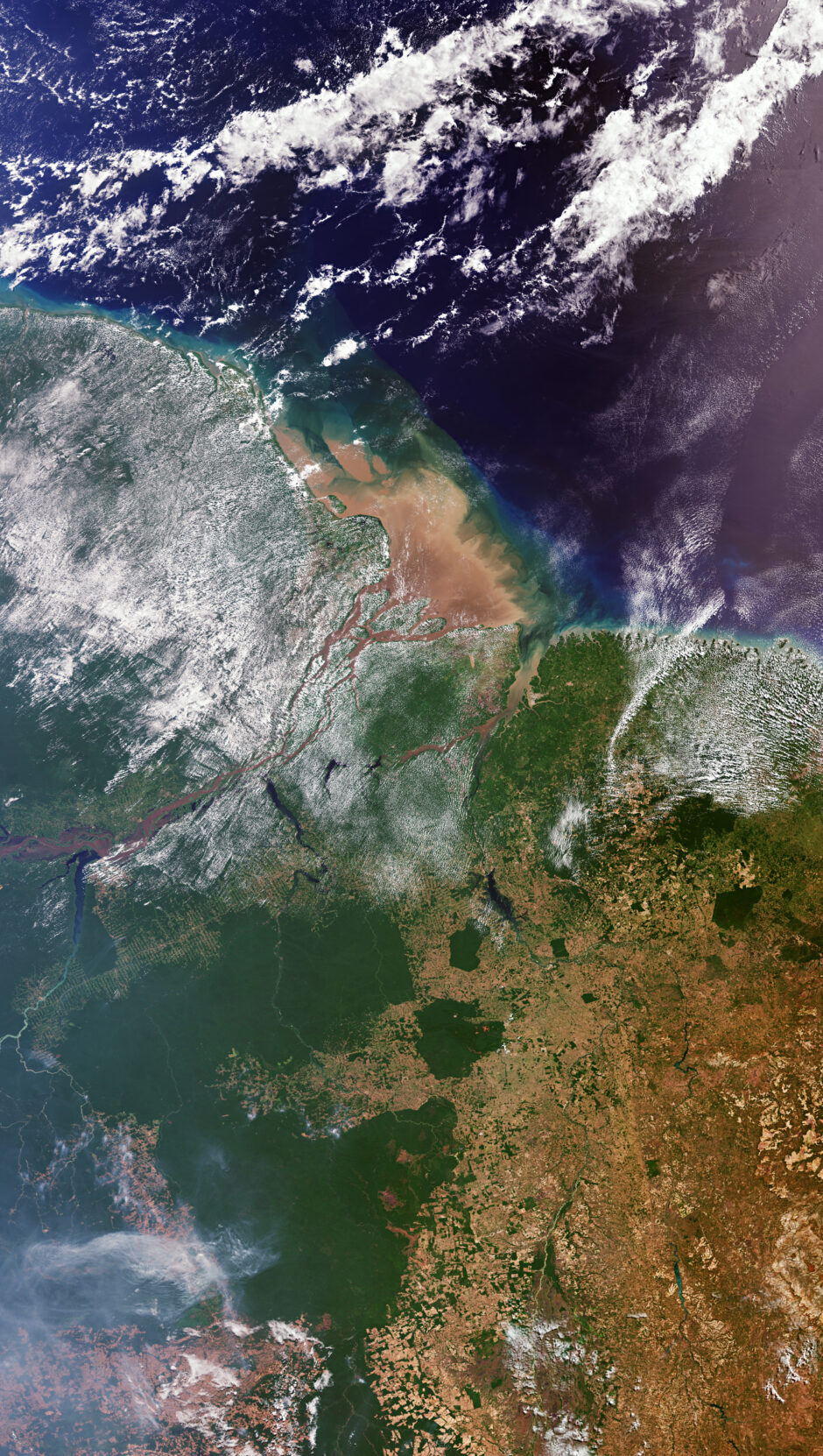Ocean Colour
Observing ocean colour
The ocean’s colour reveals insights into its biology, geology, and chemistry— “biogeochemistry.” Locally, we notice this through variations in sea colour caused by depth, sand, and seaweed. From space, we can observe larger patterns influenced by water currents, algal blooms, sub-sea geology, and habitats like coral reefs.
Ocean colour can also be used to derive a measure of the amount of chlorophyll in the ocean – a marker for life that photosynthesises, such as algae and phytoplankton. An algal bloom describes the rapid growth of phytoplankton – microscopic marine plants that drift on or near the sea surface. The chlorophyll that phytoplankton use for photosynthesis collectively tints the surrounding waters, providing a means of detecting these tiny organisms from space with certain satellite sensors.
These organisms make up the base of multiple ocean food chains, as they are eaten by zooplankton, small fish and crustaceans, which are in turn eaten by fish, small sharks, corals and baleen whales. They can however impact the fishing and tourist industries in some coastal areas.


Algal blooms are a natural and essential part of ocean life. Warm weather, with surface water temperatures reaching 29°C, and calm seas in July and August 2024 led to an increase in mucilage in the Adriatic Sea. Here, white threads of mucilage can be spotted across the bloom. Currents and winds contributed to concentrating the mucilage into visible patches along the coast, interfering with fishing activities and making the waters less attractive for swimmers.
Satellite data like those from Sentinel-2 can be used to track the growth and spread of blooms and can help local authorities to implement timely strategies to reduce the impact on tourism and fishing. Credit ESA

